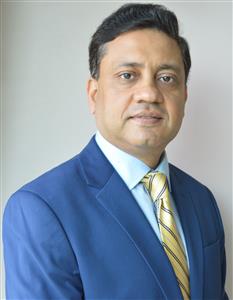Why CEOs need to rethink their people and tech strategies

The people at the top are there because, by and large, they are trusted to lead an organisation to success. And the best leaders often share very similar points of view, as one panel of CEOs showed at Mercer's 2023 HR Conference earlier this month: a consensus-driven leadership style, an inclination towards decentralised decision making, optimism about work-life harmony, and other practices that time and research have shown to be effective in creating a resilient, inclusive organisation.
On the other hand, many leaders also keep their feet firmly on the ground. Which means that they may orient towards strategies that, on the surface, seem to clash with the most popularly discussed people management approaches. The abovementioned panel, for instance, also turned up highly practical responses such as: employee benefits should be standardised for ease of administration, or cash is king when it comes to performance incentives.
These two areas, among others, are under considerable debate in the benefits and rewards arena, with HR leaders coming down on both sides of the conversation depending on the maturity of their own organisations. But with the CEOs and other business leaders apparently standing firmly on the more conservative side, does that mean organisational policies and processes will inevitably gravitate towards their viewpoint?

People Matters asked Puneet Swani (right), Mercer's senior partner and career business leader for Asia, IMEA, and the Pacific, to weigh in on what the CEOs said. His response was, simply: there's still a way to get the best of both worlds, but CEOs and other business leaders need to reframe their mindset.
Use technology to reconcile differing priorities
“Our research shows that C-suite leaders are all expecting higher demand next year,” Puneet explained. “They are concerned that they don't have the right talent to meet that higher demand. They're trying to automate to increase productivity and efficiency, they're getting involved in broader areas such as sustainability and climate change. At the same time, they understand that you can't have a personalised offering for every single employee, but they also realise that there is a certain amount of personalisation required from an employee experience perspectives. And the question they are asking is, how do you do it at the lowest cost?”
His recommendation is simple – but can be surprisingly difficult to implement well. It is the use of technology, platforms and tools that utilise automation and AI to create personalisation. But at the same time, as organisations found out in the initial rush to digitalise during the pandemic, it is not practical or viable to have too many different systems.
“Leaders and organisations need to avoid coming in at the wrong starting point,” Puneet said. “Too often, people start with the implementation, or they start with the policy, or the tool. But they need to start with the question of: what is the whole point of this policy? What problem are we trying to solve? Forget the tool. Are you trying to give your employees a better technological user experience? Are you trying to increase efficiency or productivity? And what's your business strategy for the next three to five years? Because your strategy has to define the problem.”
Identifying the problem is only the beginning, he added: leaders then need to determine how they will integrate the technology into the organisation. They need to define what skills are required to use it; they need to create a plan for fitting it together with the organisation's processes, whether this involves creating new processes, reshaping existing ones, or discontinuing outmoded ones.
And of course, a robust process needs to be formed for how the technology itself will work, including how the associated data will be handled.
“It's very important to have a clear picture of how data will be reported to the system,” Puneet advised. “If you don't have a way to ingest your data, if you don't have a way for your hiring process to talk to your performance management process or your promotion process, the tool will fail.”
Only after this point has been addressed, he said, can the organisation actually go about bringing the technology in.
Move on from the pandemic hangover
Defining problems and reviewing processes are the best starting point for any kind of strategy, not just technology. But even before this can be done, both business leaders and HR leaders need to recalibrate how they think about the future, said Puneet.
The obstacle they face, in his view, is the tendency to look back at things that succeeded in the past and try to transpose these onto the future – which is not the best approach at a time when the world is changing so quickly.
“Much of what we share today is based on the strategies that worked at the time of the pandemic,” he said. “But the world has moved on, and it will continue to move on."
"When we think about the future of work, we cannot say 'I did this the last time and it worked, so I will do the same now'. Just as you cannot feed historical data to a AI and expect it to give you a solution which is future-looking – all the solutions it gives you will be based on that past data.”
So what works to break out of that past-facing loop?
“Leaders have to go back and refresh their strategy. They have to consider what they are getting into within the next three years, from new markets to new products, new solutions, automation, everything they can predict. They need to look at the current processes which are supporting those solutions, and figure out how they need to change and then how to sustain over the next three or five years. That mindset change is probably the most important thing to carry us forward into the future.”
















